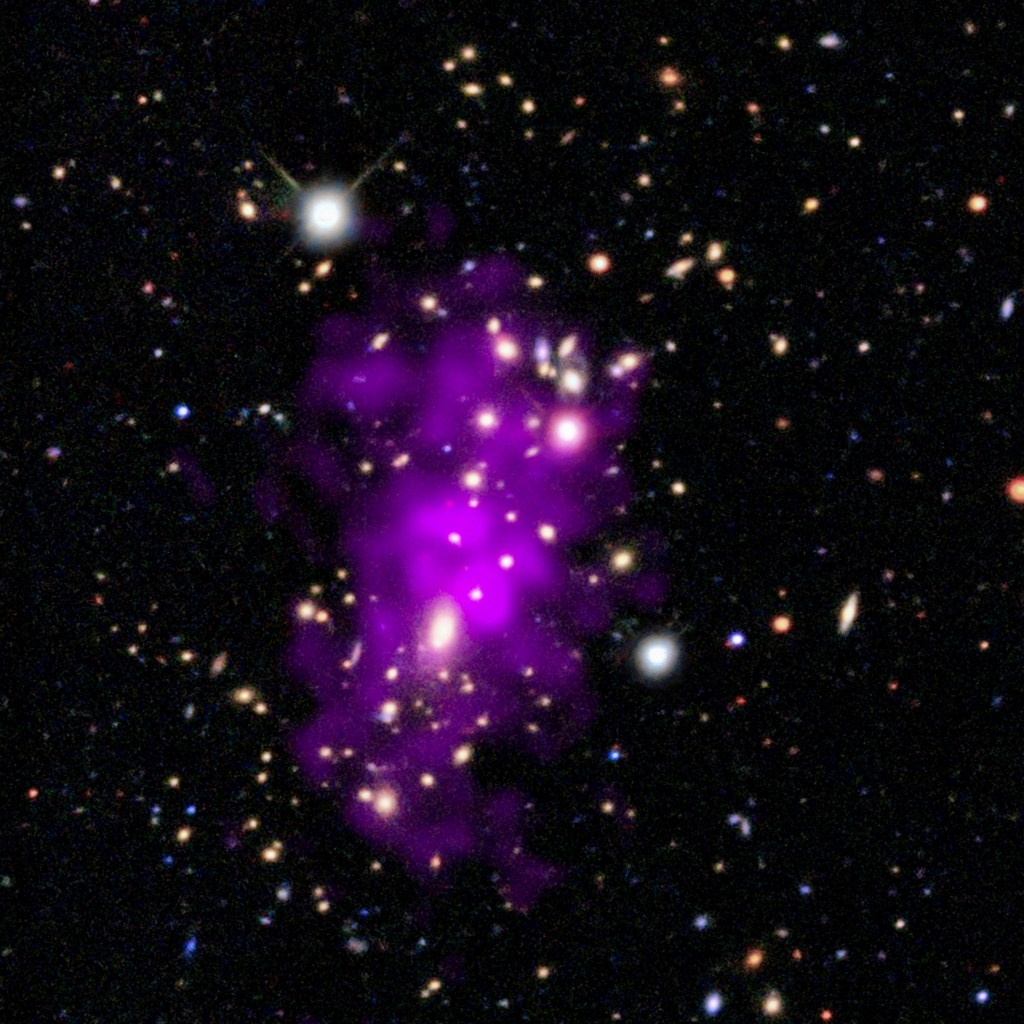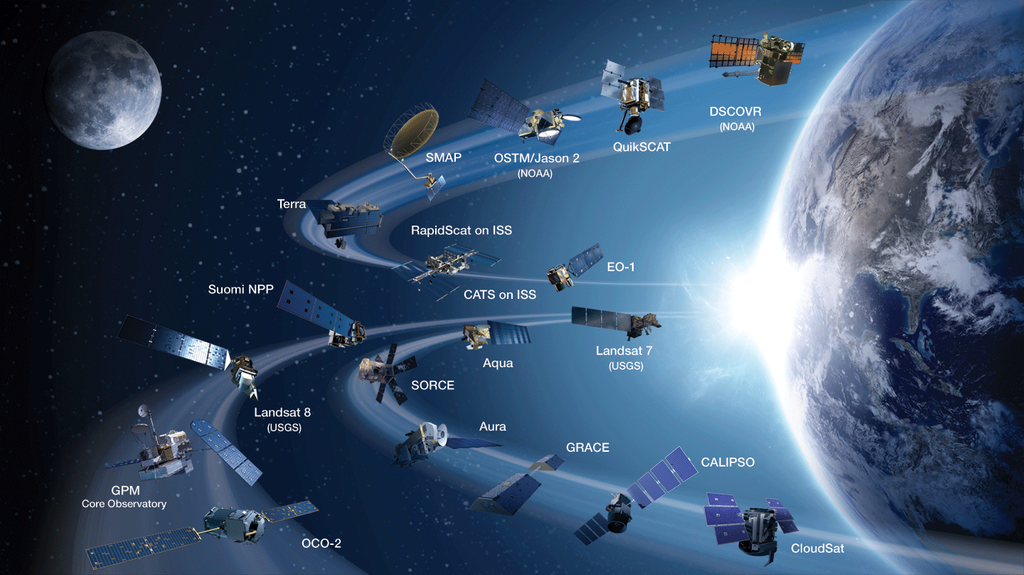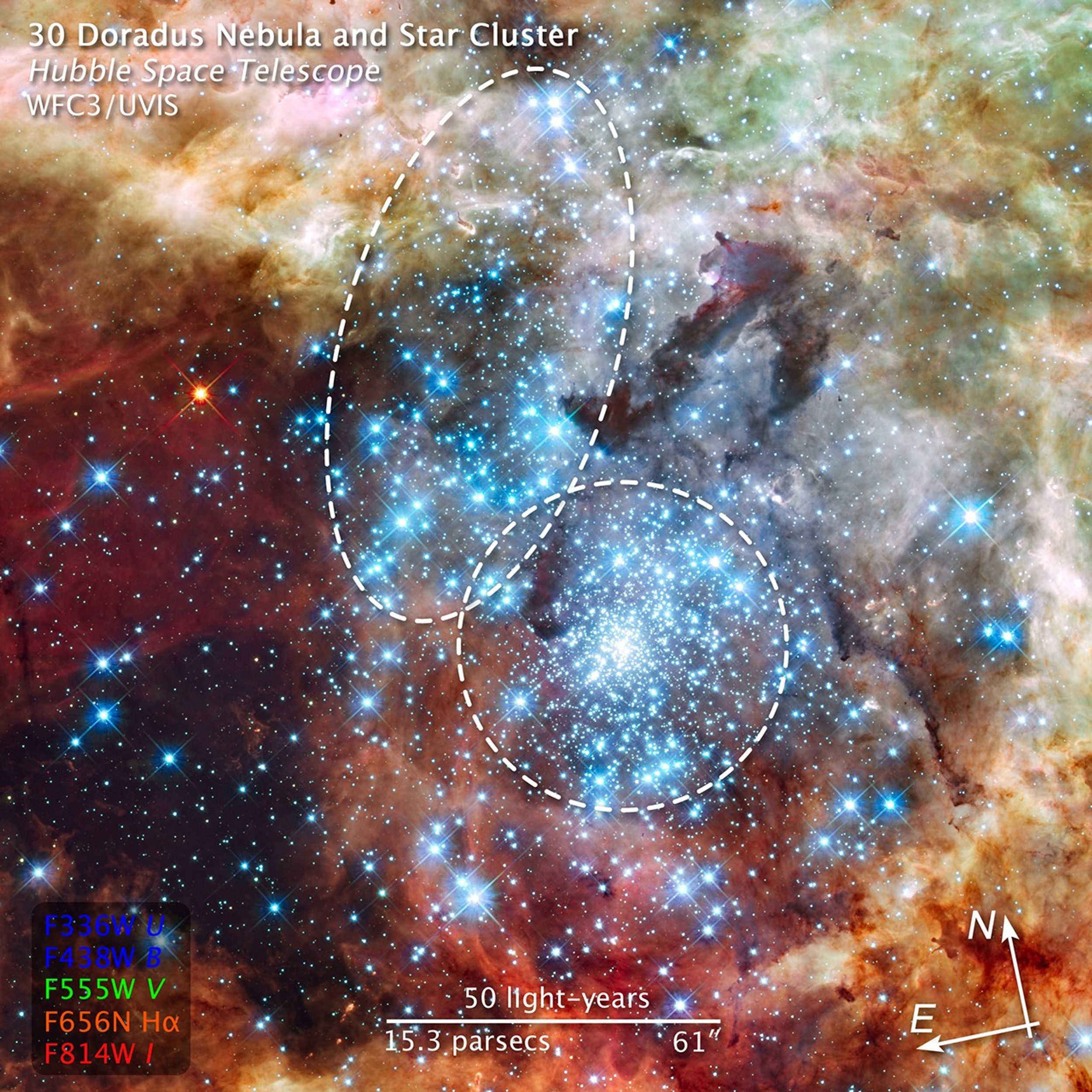1 min read
Merging Clusters in 30 Doradus
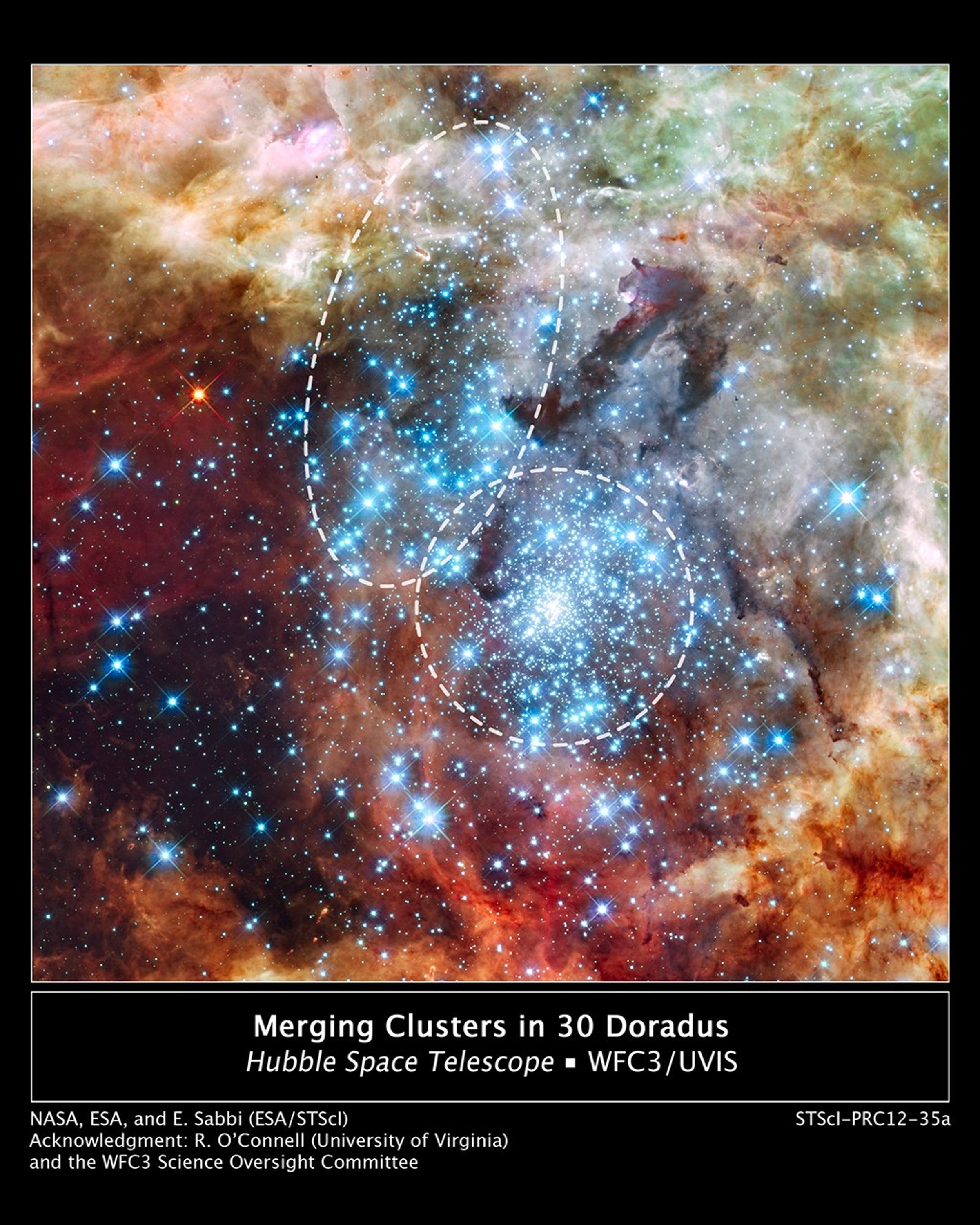
This is a Hubble Space Telescope image of a pair of star clusters that are believed to be in the early stages of merging. The clusters lie in the gigantic 30 Doradus Nebula, which is 170,000 light-years from Earth.
Hubble's circumstantial evidence for the impending collision comes from seeing an elongated structure in the cluster at upper left, and from measuring a different age between the two clusters. Also, the unusually large number of high-velocity stars around 30 Doradus can finally be explained if a small cluster has merged into the big cluster R136 in the center of the Tarantula Nebula.
This nearby example of cluster interaction yields insights into how star clusters may have formed in the early universe.
The Hubble observations, made with the Wide Field Camera 3, were taken Oct. 20-27, 2009. The blue color is light from the hottest, most massive stars; the green from the glow of oxygen; and the red from fluorescing hydrogen.
About the Object
- R.A. PositionR.A. PositionRight ascension – analogous to longitude – is one component of an object's position.05h 38m 42.36s
- Dec. PositionDec. PositionDeclination – analogous to latitude – is one component of an object's position.-69° 6' 3.24"
- ConstellationConstellationOne of 88 recognized regions of the celestial sphere in which the object appears.Dorado
- DistanceDistanceThe physical distance from Earth to the astronomical object. Distances within our solar system are usually measured in Astronomical Units (AU). Distances between stars are usually measured in light-years. Interstellar distances can also be measured in parsecs.170,000 light-years (52,000 parsecs)
About the Data
- Data DescriptionData DescriptionProposal: A description of the observations, their scientific justification, and the links to the data available in the science archive.
Science Team: The astronomers who planned the observations and analyzed the data. "PI" refers to the Principal Investigator.The image was created from Hubble data from proposal 11360: R. O'Connell (University of Virginia), B. Balick (University of Washington), H. Bond (STScI), D. Calzetti (University of Massachusetts), M. Carollo (Swiss Federal Institute of Technology, Zurich), M. Disney (University of Wales, College of Cardiff), M. Dopita (Australian National University), J. Frogel (Ohio State University Research Foundation), D. Hall (University of Hawaii), J. Holtzman (New Mexico State University), P. McCarthy (Carnegie Institution of Washington), F. Paresce (European Southern Observatory, Germany), A. Saha (NOAO/AURA), J. Silk (University of Oxford), A. Walker (NOAO/CTIO), B. Whitmore (STScI), R. Windhorst (Arizona State University), and E. Young (University of Arizona). The members of the science team are: E. Sabbi and D.J. Lennon (ESA/STScI), M. Gieles (University of Cambridge, UK), S.E. de Mink (STScI/JHU), N.R. Walborn, J. Anderson, A. Bellini, N. Panagia, and R. van der Marel (STScI), and J. Maíz Apellániz (Instituto de Astrofísica de Andalucía, CISC, Spain). - InstrumentInstrumentThe science instrument used to produce the data.HST>WFC3/UVIS and HST>WFC/IR
- Exposure DatesExposure DatesThe date(s) that the telescope made its observations and the total exposure time.October 20 - 27, 2009 (WFC3/UVIS), and October 20 - 27, 2009 (WFC/IR), Exposure Times: 11.7 hours, and 2.6 hours
- FiltersFiltersThe camera filters that were used in the science observations.F336W (U), F438W (B), F555W (V), F656N (H-alpha), and F814W (I)
- Object NameObject NameA name or catalog number that astronomers use to identify an astronomical object.30 Doradus, 30 Dor, Tarantula Nebula
- Object DescriptionObject DescriptionThe type of astronomical object.Nebula in the Large Magellanic Cloud
- Release DateAugust 16, 2012
- Science ReleaseHubble Watches Star Clusters on a Collision Course
- Credit

The images are composites of separate exposures made by the WFC3 instrument on the Hubble Space Telescope. Five filters were used to sample broad and narrow wavelength ranges for the UVIS image. The colors result from assigning different hues (colors) to each monochromatic image. In this case, the assigned colors are: WFC3/UVIS image of 30 Dor Blue: F336W (U) + F438W (B) Green: F555W (V) Red: F814W (I) Orange/red: F656N (H-alpha)

Related Images & Videos
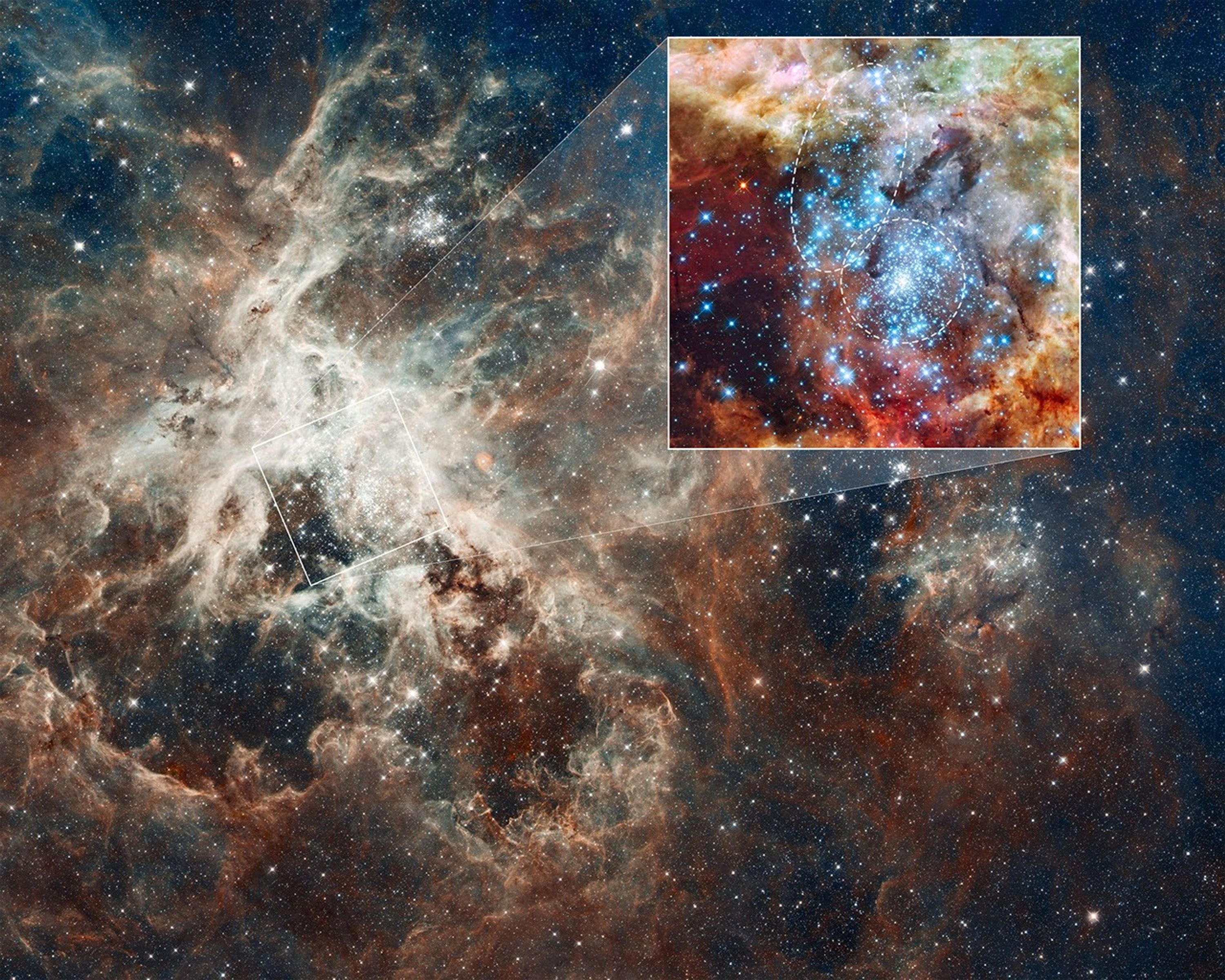
30 Doradus Nebula and Star Clusters
This is a Hubble Space Telescope image of a pair of star clusters that are believed to be in the early stages of colliding. The clusters lie in the gigantic 30 Doradus Nebula, which is 170,000 light-years from Earth. Hubble's circumstantial evidence for the impending collision...
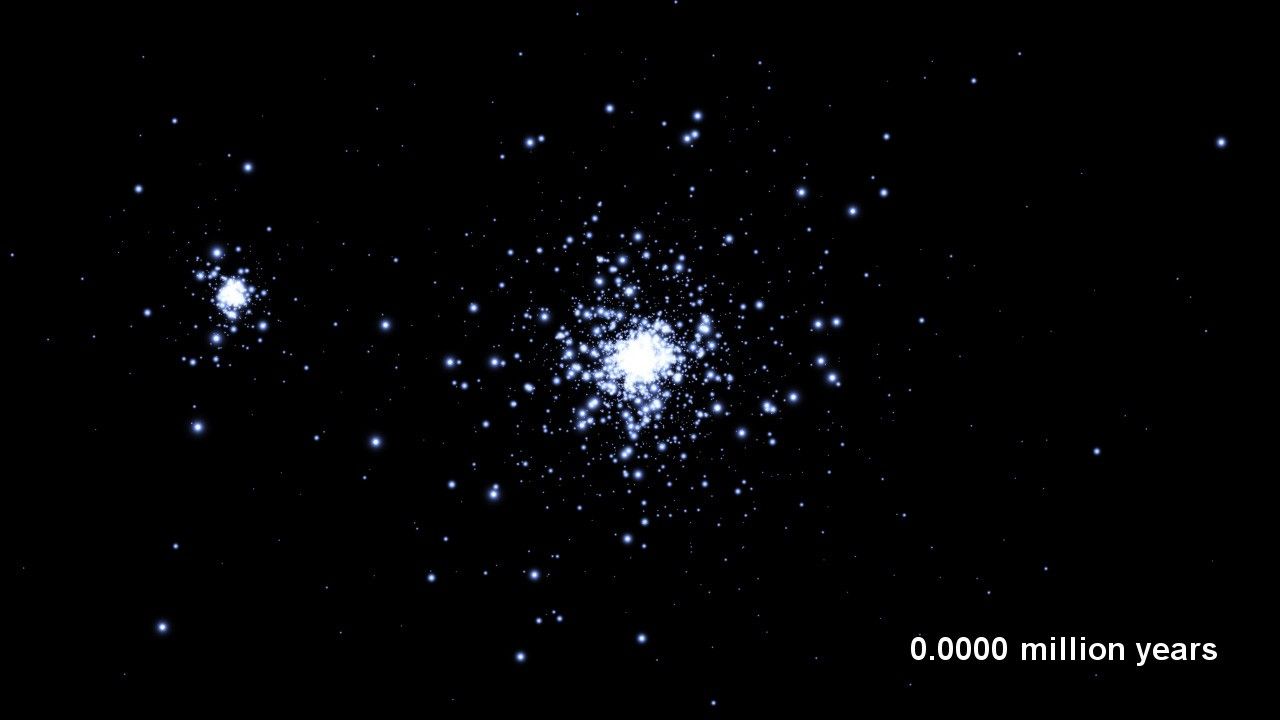
Simulation of Star Clusters Encounter (Annotated)
This computer simulation shows the gravitational interaction of two young star clusters in a nearby star-forming region. The three and a half million years of the encounter have been compressed into just 27 seconds. The smaller star cluster approaches from the left, has its...

Simulation of Star Clusters Encounter
This computer simulation shows the gravitational interaction of two young star clusters in a nearby star-forming region. The three and a half million years of the encounter have been compressed into just 27 seconds. The smaller star cluster approaches from the left, has its...
Share
Details
Claire Andreoli
NASA’s Goddard Space Flight Center
Greenbelt, Maryland
claire.andreoli@nasa.gov




